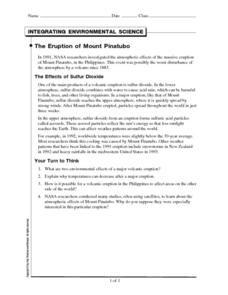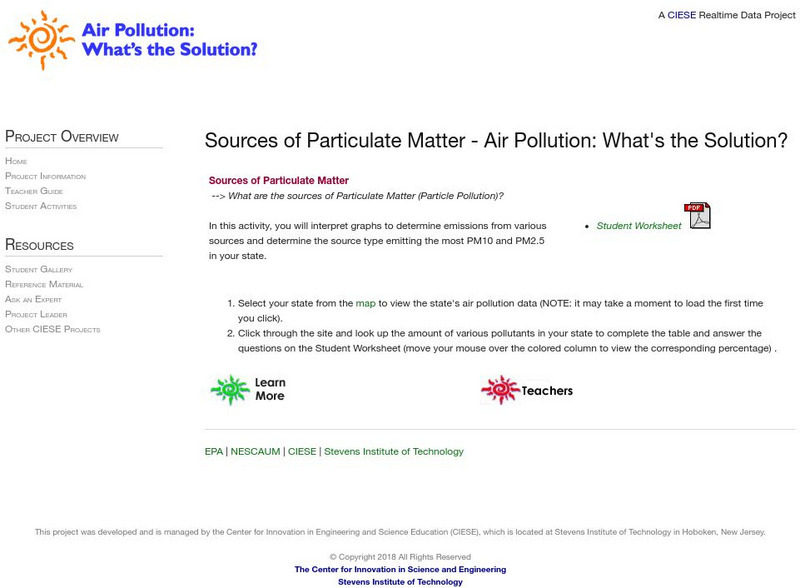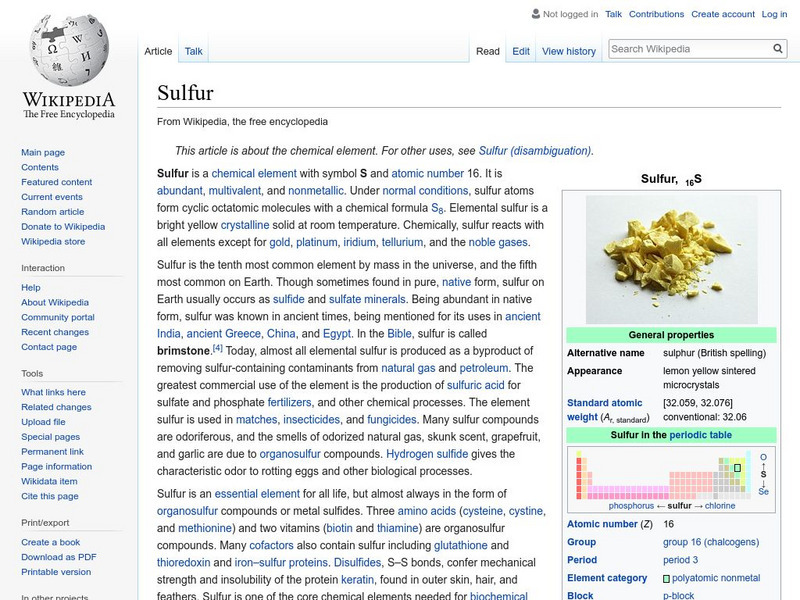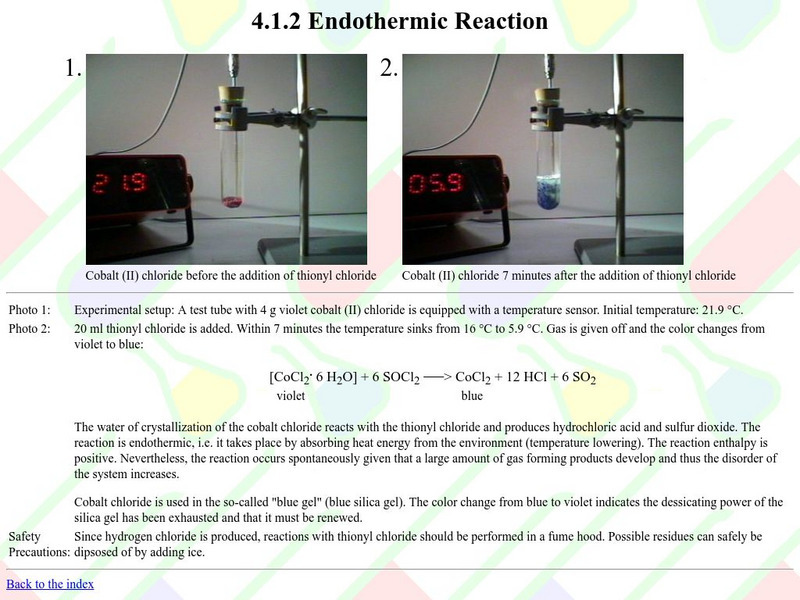Curated OER
Stoichiometry (gases and masses)
In this chemistry worksheet, students identify how many liters of oxygen can be consumed to form carbon dioxide. Then they identify how many liters of sulfur dioxide are produced if the gas is at STP.
Curated OER
The Eruption of Mount Pinatubo
For this volcano worksheet, students read about the eruption of Mount Pinatubo and the effects of sulfur dioxide. Then students complete 4 short answer questions.
Curated OER
Grahams Law
In this Grahams Law worksheet, students determine which gas will escape faster when equal amounts of helium and argon are placed in a porous container and allowed to escape. Then they determine what the molecular weight of a gas is that...
Curated OER
Air Quality Trivia Time
Students identify and analyze what the Air Quality Index (AQI) is and how it works. They review ways that "unhealthy" or "hazardous" days could be prevented and draw and color something that they can do to help reduce air pollution....
Center for Innovation in Engineering and Science Education, Stevens Institute of Technology
Ciese Real Time Data Projects: Air Pollution: Sources of Particulate Matter
Find out what sources are contributing to the particulate pollution in your state. An interactive bar graph shows the major types of air pollution and their sources. This particular activity focuses on two types of particulates.
Wikimedia
Wikipedia: Sulfur
This site from the Wikipedia Encyclopedia provides information on atomic properties, physical properties and notable characteristics of sulfur can be found on this informative site. Links are provided for additional information.
Other
University of Siegen: An Endothermic Reaction
This resource provides information on a rather interesting spontaneous endothermic reaction, involving cobalt (II) chloride and thionyl chloride.
Other
State of the Environment Norway: Acid Rain
Lots of graphs and maps along with a complete explanation of acid rain and its threat to our environment. A long list of environmental links.
Other
Sulfur Facts
Sulfur history, production, processing, properties, and sulfur uses are explained in this comprehensive site.
US Environmental Protection Agency
Epa: Air Trends
Each year EPA tracks the levels of pollutants in the air and how much of each pollutant (or the pollutants that form them) is emitted from various pollution sources. The Agency looks at these numbers year after year to see how the...
University Corporation for Atmospheric Research
Ucar: Name That Air Pollutant
Students create graphic organizers describing the four major air pollutants regulated by the U.S. Clean Air Act (ground-level ozone, particle pollution, carbon monoxide, and sulfur dioxide) and then identify the pollutants with a...
University Corporation for Atmospheric Research
Ucar: Air Pollution: How We're Changing the Air
Learn about the six main types of human-made air pollutants and their sources.











